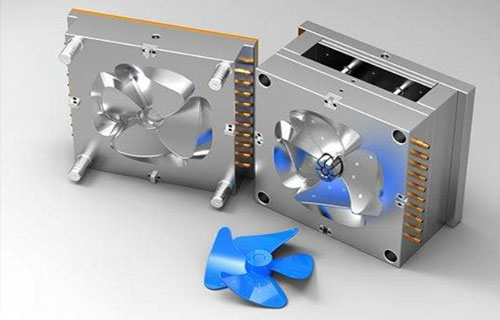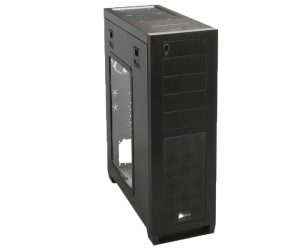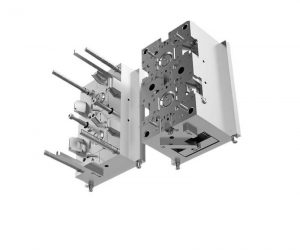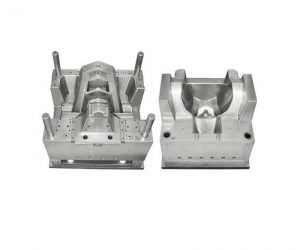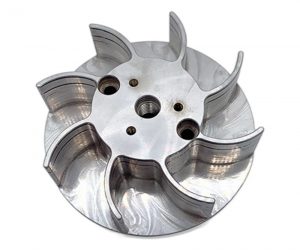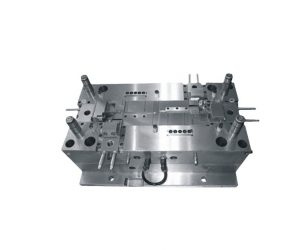What is China Rapid Tooling?
Rapid Tooling, in a nutshell, is a manufacturing process that uses rapid prototyping technologies to quickly produce prototype parts, which are then transformed into production - ready molds. This technology is a game - changer for companies looking to reduce time - to - market and cut down on costs.
In traditional tooling, the process involves a series of complex steps such as design, machining, and testing, which can take months to complete. For example, creating a plastic injection mold for a new consumer electronics product through traditional methods could take up to 3 - 4 months. In contrast, China Rapid Tooling can significantly shorten this timeline. By leveraging advanced 3D printing, CNC machining, and other rapid manufacturing techniques, the production time can be reduced to as little as 2 - 4 weeks.
China has emerged as a global leader in rapid tooling due to its well - developed manufacturing infrastructure, large pool of skilled engineers, and cost - effective production capabilities. According to industry reports, China accounts for approximately 30% of the global rapid tooling market share, with a continuous growth rate of about 15% annually. This growth is driven by the increasing demand from various industries such as automotive, aerospace, and consumer goods.
There are several types of rapid tooling techniques available in China:
- 3D Printing (Additive Manufacturing): This method builds parts layer by layer from a digital 3D model. Materials can range from plastics like ABS and PLA to metals such as aluminum and titanium. For instance, in the production of small, intricate jewelry molds, 3D printing can create highly detailed prototypes in a matter of hours.
- CNC Machining: Computer - Numerical - Control machining is used to create precise parts from a block of material. It is highly accurate and suitable for both plastic and metal tooling. In the automotive industry, CNC - machined molds are often used for manufacturing engine components.
- Silicone Molding: This is a cost - effective and quick method for creating small - to - medium - sized molds. Silicone molds are flexible and can be used to produce multiple copies of a part. They are commonly used in the production of small handicrafts and custom - made toys.
The Process of China Rapid Tooling
1. Design Phase
The design phase is the cornerstone of China Rapid Tooling. CAD (Computer - Aided Design) and CAM (Computer - Aided Manufacturing) technologies play a pivotal role here. With CAD software, engineers can create highly detailed 3D models of the parts or molds. For example, in the design of a new smartphone case mold, CAD allows for the precise definition of every curve, corner, and internal structure. This digital model is then transferred to CAM software, which generates the tool paths for the manufacturing equipment.
Design optimization in this phase can have a profound impact on the subsequent manufacturing process. A case in point is a medical device company that was developing a new inhaler. Through iterative design in CAD, they were able to reduce the number of parts in the mold from 10 to 6. This not only simplified the manufacturing process but also cut down on material costs and production time. By using simulation tools in CAD/CAM, potential manufacturing issues such as warping, under - filling, and excessive stress points can be identified and resolved before any physical production begins.
2. Material Selection
The choice of materials in China Rapid Tooling is crucial as it directly affects the quality, cost, and performance of the final product. Here are some commonly used materials:
- Steel P20: This is a pre - hardened steel, widely used in mold making. It has a hardness of around 30 - 35 HRC. Its advantages include good machinability, which means it can be easily processed using CNC machining. It is suitable for medium - sized molds and products with a medium production volume, such as consumer electronics housings. However, its corrosion resistance is relatively low, so it may not be the best choice for products that will be in contact with corrosive substances.
- Aluminum Alloy: Aluminum alloys, like 7075, are popular due to their high strength - to - weight ratio. They are lightweight, which is beneficial for applications where weight is a concern, such as aerospace components. Aluminum alloys also have excellent thermal conductivity, making them suitable for molds that require efficient heat dissipation during the manufacturing process. But they are generally more expensive than some steel materials and may not be as wear - resistant in high - friction applications.
- Silicone: Silicone is a soft, flexible material. It is mainly used for low - volume production and prototyping, especially for products with complex geometries or those that require a flexible mold. For example, in the production of custom - made silicone phone cases, silicone molds can be quickly created at a relatively low cost. However, silicone molds have a lower lifespan compared to metal molds and are not suitable for high - temperature or high - pressure manufacturing processes.
When choosing a material, factors such as the product's end - use, production volume, cost constraints, and required mechanical properties should be considered. For high - volume production of automotive parts, steel materials might be more suitable due to their durability and cost - effectiveness in the long run. For small - scale, short - term projects like a new product concept validation, silicone or aluminum alloy could be a better fit.
3. Manufacturing Techniques
- 3D Printing: The working principle of 3D printing is to build parts layer by layer from a digital 3D model. There are various 3D printing technologies, such as Fused Deposition Modeling (FDM), Stereolithography (SLA), and Selective Laser Melting (SLM). FDM, for example, extrudes a melted thermoplastic filament to create each layer. 3D printing offers high design freedom, allowing for the creation of complex geometries that are difficult or impossible to achieve with traditional manufacturing methods. In terms of accuracy, FDM printers can typically achieve an accuracy of ±0.1 - 0.4 mm, while more advanced SLA and SLM printers can reach much higher precision levels, down to ±0.01 mm. The production speed varies depending on the size and complexity of the part, but generally, it can produce small parts within a few hours. However, the cost per unit can be relatively high, especially for large - scale production, due to the cost of materials and the time required for printing.
- CNC Machining: CNC machining uses computer - controlled machine tools to remove material from a workpiece. The machine reads the tool paths generated by CAM software and precisely cuts, drills, mills, or grinds the material. It offers extremely high precision, often within ±0.001 - 0.01 mm, making it suitable for high - tolerance parts. The machining speed depends on factors like the material being processed, the complexity of the part, and the type of CNC machine. For example, machining a simple aluminum block can be relatively fast, while a complex steel mold with many intricate details will take longer. CNC machining is cost - effective for medium - to - high - volume production runs. But for very small production volumes or highly complex designs with free - form surfaces, the setup cost and programming time can make it less competitive compared to 3D printing.
- Silicone Molding: In silicone molding, a master pattern is first created, and then liquid silicone is poured around it. After curing, the silicone mold is removed from the master, and it can be used to produce multiple copies of the part by injecting a suitable material, such as resin or wax, into the mold. Silicone molding is a relatively fast process, with the mold - making process usually taking only a few hours to a day, depending on the size and complexity of the part. It is highly cost - effective for low - volume production, with the cost mainly being the price of the silicone material and the labor for mold making. However, the accuracy of silicone - molded parts is generally lower compared to CNC - machined or some 3D - printed parts, typically with an accuracy of around ±0.5 - 1 mm.
To choose the right manufacturing technique, one must consider the product's design complexity, required accuracy, production volume, and budget. For a one - off, highly complex jewelry piece, 3D printing might be the best option. For a large - scale production of automotive engine parts with high - tolerance requirements, CNC machining would be more appropriate. And for a small - batch production of art - crafts, silicone molding could be the most cost - effective choice.
Applications of China Rapid Tooling
China Rapid Tooling has found widespread applications across various industries, revolutionizing the way products are developed and manufactured.
Automotive Industry
In the automotive industry, rapid tooling plays a crucial role. For example, a leading Chinese automotive manufacturer was developing a new electric vehicle model. Using rapid tooling techniques, they were able to quickly produce prototype molds for the car's body panels. The traditional tooling process would have taken months, but with rapid tooling, the molds were ready in just 3 weeks. This not only accelerated the development cycle but also allowed for early design validation. By using 3D - printed molds, they could test different design concepts and make modifications easily. As a result, the final product had improved aerodynamics, which enhanced the vehicle's performance and energy efficiency. In addition, rapid tooling reduced the cost of prototyping by about 40% compared to traditional methods, as it minimized the need for expensive machining of metal molds at the prototype stage.
Electronics Industry
The electronics industry, known for its fast - paced product innovation, benefits greatly from China Rapid Tooling. A smartphone company wanted to launch a new model with a unique, ergonomic design. Through rapid tooling, they created silicone molds for the phone's casing within 2 days. These molds were used to produce small - batch prototypes for user testing. Based on the feedback, they made design adjustments and then used CNC - machined metal molds for high - volume production. The use of rapid tooling in the early stages enabled the company to bring the product to market 2 months earlier than planned. This early launch gave them a competitive edge in the market and increased their market share by approximately 8% in the first quarter after the product launch.
Medical Industry
In the medical field, precision and speed are of utmost importance. A medical device company was developing a new surgical instrument. With China Rapid Tooling, they could quickly fabricate custom - designed molds using 3D printing. The molds were made of biocompatible materials, ensuring the safety of the final product. The traditional tooling process would have been time - consuming and costly, but rapid tooling reduced the production time of the prototype molds from 6 weeks to 2 weeks. This allowed the company to conduct clinical trials earlier, potentially bringing the new surgical instrument to patients months sooner and improving patient outcomes.
Aerospace Industry
Aerospace applications demand high - quality components with strict tolerances. A satellite manufacturer in China used rapid tooling to produce lightweight aluminum alloy parts for a new satellite model. By leveraging CNC machining and 3D printing, they were able to create complex parts with internal lattice structures that reduced weight without sacrificing strength. The traditional manufacturing process would have been unable to achieve such complex geometries easily. The use of rapid tooling not only improved the performance of the satellite by reducing its weight (resulting in lower fuel consumption during launch), but also cut down on the overall production cost by about 25% due to less material waste and shorter production times.
In summary, China Rapid Tooling has become an essential technology across multiple industries, enabling companies to innovate faster, reduce costs, and improve product quality.
Yigu Technology's View
As a non - standard plastic and metal products custom supplier, Yigu Technology highly values China Rapid Tooling. With years of experience in the industry, we have witnessed firsthand the transformative power of rapid tooling in enhancing product development and manufacturing efficiency.
We place a strong emphasis on quality and innovation in our rapid tooling services. Our team of skilled engineers and technicians is proficient in various rapid tooling techniques, allowing us to provide customized solutions that meet the unique needs of our clients. By leveraging advanced technologies and high - quality materials, we ensure that the molds and parts we produce are of the highest quality, with excellent dimensional accuracy and surface finish.
One of our key strengths is our ability to handle complex and challenging projects. Whether it's creating molds for intricate medical devices or high - precision aerospace components, we have the expertise and resources to deliver outstanding results. We also offer a quick turnaround time, enabling our clients to bring their products to market faster and gain a competitive edge.
In addition, Yigu Technology is committed to continuous improvement and staying at the forefront of rapid tooling technology. We invest in research and development to explore new materials, techniques, and processes, and we actively collaborate with our clients to understand their evolving needs and provide innovative solutions.
FAQ about China Rapid Tooling
1. What is the typical lead time for China Rapid Tooling projects?
The lead time for China Rapid Tooling projects can vary significantly depending on several factors. For instance, the complexity of the product plays a crucial role. A simple plastic part with a straightforward geometry might take only 1 - 2 weeks, while a highly complex aerospace component with intricate internal structures could take 4 - 6 weeks. The order quantity also matters. Small - batch orders (less than 100 units) can often be completed more quickly, usually within 2 - 3 weeks, compared to large - volume orders (more than 1000 units) which may require 4 - 8 weeks due to the need for more production time and quality checks. Different production processes have different time requirements as well. 3D printing is generally faster for small, complex parts, with a production time of a few days to a week, while CNC machining for large - scale metal parts can take longer, around 3 - 6 weeks.
To shorten the lead time, it is advisable to have a well - defined design ready before approaching the supplier. Clear communication of your requirements and any specific deadlines can also help the supplier prioritize your project. Additionally, choosing a supplier with advanced equipment and a streamlined production process can significantly reduce the production time.
2. How can I ensure the quality of the rapid - tooled products?
Quality control in China Rapid Tooling involves several key aspects. First and foremost, the inspection of raw materials is essential. For example, when using steel for tooling, the chemical composition and mechanical properties of the steel should be tested to ensure they meet the required standards. During the manufacturing process, regular process monitoring is carried out. In 3D printing, parameters such as layer thickness, printing speed, and temperature are closely monitored to ensure consistent quality. For CNC machining, the accuracy of the machine tools and the cutting tools is regularly checked. After the products are completed, comprehensive 成品检测 are conducted, including dimensional inspection using precision measuring instruments like coordinate measuring machines (CMMs) to ensure that the parts meet the design specifications.
To ensure product quality, effective communication with the supplier is vital. Provide detailed design drawings with clear tolerances and quality requirements. Request the supplier to provide quality control reports at different stages of production. Some common quality issues include dimensional inaccuracies, surface roughness, and material defects. In case of dimensional inaccuracies, the supplier can adjust the manufacturing parameters or re - machine the parts. For surface roughness problems, post - processing techniques such as polishing or sandblasting can be used to improve the surface finish. If there are material defects, the supplier should replace the defective parts and review the material procurement process.
3. Can China Rapid Tooling handle complex and large - scale projects?
Yes, China Rapid Tooling has demonstrated the ability to handle complex and large - scale projects. For example, in the automotive industry, Chinese manufacturers have successfully produced large - scale injection molds for car body panels. These molds are not only large in size but also have complex internal cooling channels and precise surface requirements. By using a combination of advanced 3D printing for prototyping and CNC machining for final production, they can meet the high - quality and high - volume production needs. In the aerospace field, complex parts with thin - walled structures and high - precision requirements, such as turbine blades, have also been successfully manufactured through rapid tooling.
To handle such projects, Chinese manufacturers often employ multi - process collaboration strategies. They may start with 3D printing to quickly create a prototype for design verification, then use CNC machining for high - precision manufacturing, and finally combine with other processes like electroplating or heat treatment to meet the performance requirements of the parts. Effective project management is also crucial. This includes detailed planning, resource allocation, and strict quality control throughout the project lifecycle to ensure that the project progresses smoothly and meets the deadlines and quality standards.
